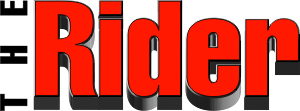
An Equine Nutrition Blog by Madeline Boast, MSc. Equine Nutrition.
Entering a feed store and trying to put together a nutrition plan that meets your horse’s needs can be a daunting task. With a market that is saturated with options, equine nutrition can be overwhelming. I’m here to tell you that it doesn’t have to be that way!
Are you choosing that product based on good advertising, maybe you chose it because a barn mate has had good results, or maybe you’ve looked at the tag and thought that it meets your horse’s requirements…and the list goes on. The thing is, what is being fed should be brought back to what is lacking in the forage.
Forage first is a key motto at Balanced Bay and is generally accepted by horse owners. However, there seems to be a disconnect when nutrition decisions are being made. Horses are herbivores with hindgut fermentation that have evolved to graze. Continuous access to roughage or small frequent meals throughout the day has clearly reported health benefits. A more stable microbial environment in the hindgut as well as a lower risk or stereotypic behaviours have been widely reported in research. In addition to this, continuous forage access greatly reduces gastric ulcer risk. With clear physiological and psychological benefits, such as those previously listed, why isn’t forage the primary nutrition focus?
Historically, it was challenging to meet the energy needs of hard-working horses with a primarily forage-based diet. A reason for this was that the available forage was of lesser quality than what we have today. This nutritional problem contributed to the feeding of energy-dense grains. This feeding technique is still used today despite the available forages being of much higher quality.
So…how do you know if you are feeding enough forage? Or if your diet is meeting your horse’s requirements?
The answer: a hay analysis!
A hay analysis should always be used as the starting point of a diet evaluation. Since forage is the primary component of the diet it makes sense to balance the diet to that forage. Having a qualified equine nutritionist come to your farm to take core samples of multiple hay bales is the gold standard. This will give you a more accurate analysis of the hay. The nutritionist can also ensure that the laboratory they are sending the sample will provide an equine-specific analysis.
The quality of hay varies greatly, even from the same field year to year. When purchasing or harvesting your own hay, the only way to know the nutrient content is with a lab analysis. With all the time and money that goes into feeding our horses, why not know exactly what you’re feeding!
The nutrient analysis provides you with information such as moisture levels, dry matter, digestibility parameters, protein content and mineral content. There are also calculated values such as non-structural carbohydrates. With this information you can work with a nutritionist to develop a feeding plan that meets your horse’s nutrient requirements.
When you have a nutritionist calculate and provide exactly what your horse needs, it takes the guesswork out and allows adequate nutrient supply. Additionally, you will also be at ease knowing your horse is not suffering from any vitamin or mineral deficiencies that may hinder their health and well-being.
In conclusion, everyone is trying to do the best for their horse, so why not ensure you have accurate information to base your decisions off? There is a plethora of scientifically proven health benefits to a forage-first diet. Therefore, basing your nutrition decisions off of your hay analysis is the best way to support your horse’s nutritional well-being.
If you have any further questions, please contact Madeline at balancedbaynutrition@gmail.com.
About the author: Madeline Boast completed her master’s in Equine Nutrition at the University of Guelph and founded an independent nutrition company Balanced Bay. She has worked with a variety of equids – from miniature ponies to competing thoroughbreds. Through Balanced Bay she offers hay testing, balanced diets, as well as both on-farm and remote nutrition consultations. For additional information see www.balancedbay.ca
References:
Durham, A. E. (2009). The role of nutrition in colic. Veterinary Clinics of North America: Equine Practice, 25(1), 67-78.
Ellis, J. M., Hollands, T., & Allen, D. E. (2002). Effect of forage intake on bodyweight and performance. Equine Veterinary Journal, 34(S34), 66-70.
Goodwin, D., Davidson, H. P. B., & Harris, P. (2002). Foraging enrichment for stabled horses: effects on behaviour and selection. Equine Veterinary Journal, 34(7), 686-691.
Jansson, A., Saastamoinen, M., & Lindberg, J. E. (2012). Forage feeding systems. In Forages and grazing in horse nutrition (pp. 289- 303). Wageningen Academic Publishers, Wageningen.
National Research Council. Nutrient Requirements of Horses. (2007). National Academy Press, Washington, D.C.
Saastamoinen, M. T., & Hellämäki, M. (2012). Forage analyses as a base of feeding of horses. In Forages and grazing in horse nutrition (pp. 305-314). Wageningen Academic Publishers, Wageningen.
Undersander, D., Morrison, J., Phillips, E., Leep, R., Peterson, P., & Sheaffer, C. (2002). Buying horse hay. Wisconsin, USA: University of Wisconsin Extension Publication.
Uotila, R., Thuneberg, T., & Saastamoinen, M. (2012). The usage of forage analyses in optimizing horse nutrition in Finland. In Forages and grazing in horse nutrition (pp. 331-334). Wageningen Academic Publishers, Wageningen.


